SciTech Tuesday: 70 Years Ago, Mount Vesuvius Erupts
The last major eruption of Mount Vesuvius began 70 years ago today on March 18, 1944. Massive explosions and lava outflows destroyed three Italian villages and part of a fourth. Approximately 80 B-25 Mitchell bombers of the 340th Bombardment Group based at Pompeii Airfield were damaged beyond repair. Hot ash and tephra, rock fragments from the explosion, wreaked havoc on the acrylic glass windshields, gun turrets, engines and fabric surfaces of the aircraft.
Mount Vesuvius, a stratovolcano identified by a large cone formed from layers of hardened lava and rock, is best known for the destruction of the Roman cities of Pompeii and Herculaneum in AD 79. The cataclysmic eruption spewed stone and ash over 20 miles into the atmosphere, killing over 16,000 people. The only active volcano in mainland Europe, Vesuvius is considered one of the most deadly volcanoes in the world due to its location near heavily populated areas.
- Mt. Vesuvius belches huge clouds of smoke and volcanic ash over the remains of San Sebastiano, Italy, partially destroyed by the lave stream from the erupting volcano, March 24, 1944. U.S. Army Signal Corps photograph from the collection of The National WWII Museum.
- View looking down into mouth of Mt. Vesuvius, late 1944 to early 1945. Gift of Robert Millett, from the collection of The National WWII Museum
- A U.S. Navy photographer, used to shooting the perils of war, takes on one of nature’s upheavals as he catches a column of smoke rising above the treacherous volcano near Naples, released April 5, 1944. U.S. Navy Official photograph, Gift of Charles Ives, from the collection of The National WWII Museum.
- Vesuvius erupting with vehicles on a road in foreground. A large fleet of Army vehicles were used to evacuate the villagers who lived in the path of Vesuvius’ lava. U.S. Navy Official photograph, Gift of Charles Ives, from the collection of The National WWII Museum.
- American soldiers evacuating people from the path of Mt. Vesuvius eruption in San Sebastiano, Italy on March 21, 1944. U.S. Army Signal Corps photograph, from the collection of The National WWII Museum.
- U.S. Servicemen view city of Pompeii from above, late 1944 to early 1945. Gift of Robert Millett, from the collection of The National WWII Museum.
Post by Annie Tête, STEM Education Coordinator
- Posted :
- Post Category :
- Tags :
- Follow responses to this entry through the RSS 2.0 feed. You can skip to the end and leave a response. Pinging is currently not allowed.


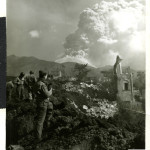
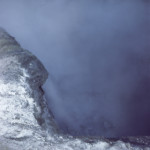
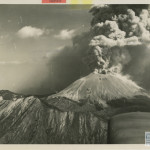
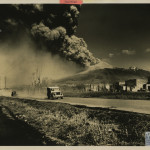
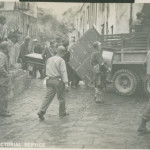
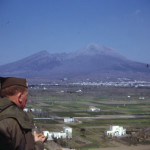


Leave a Reply